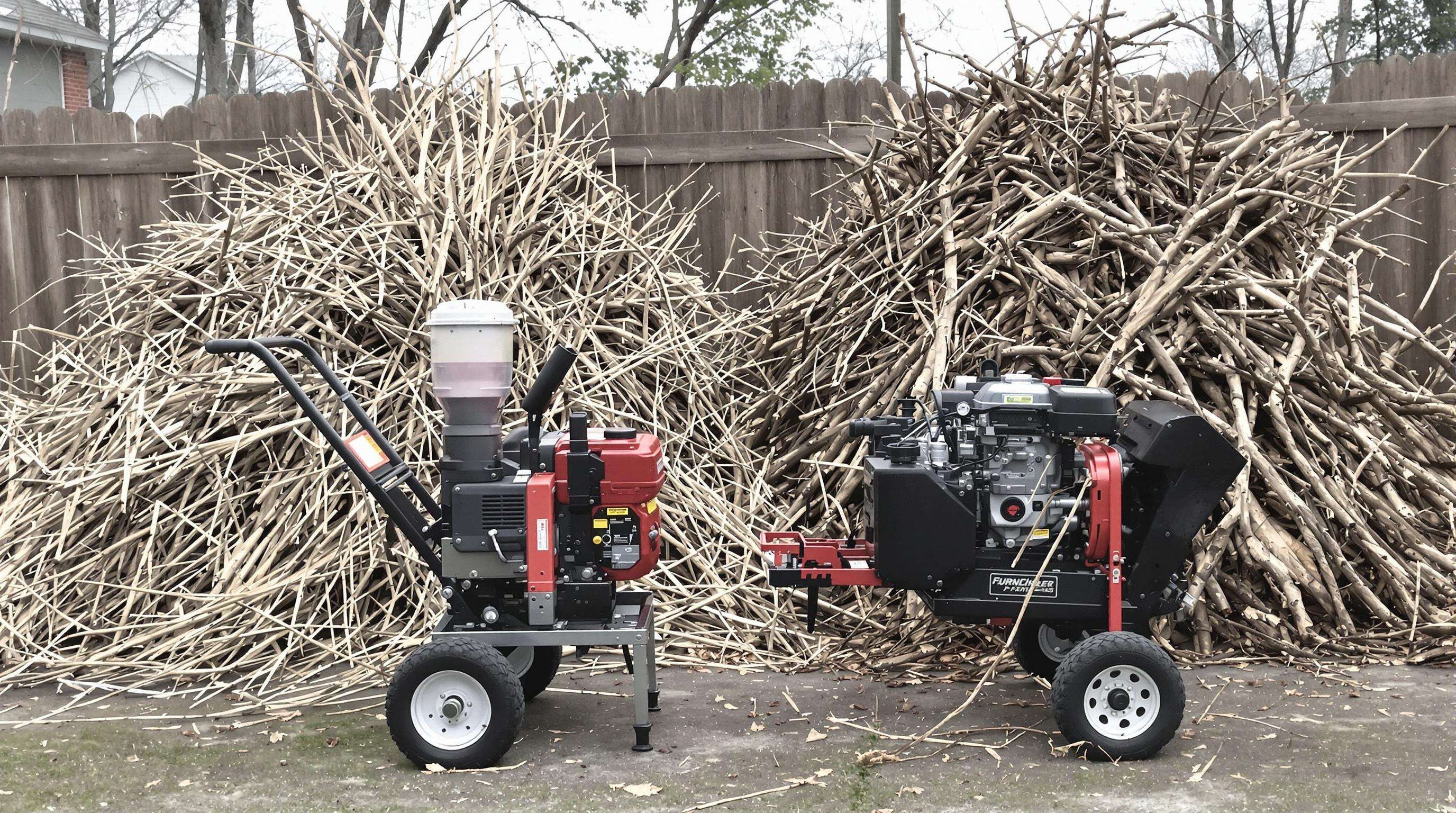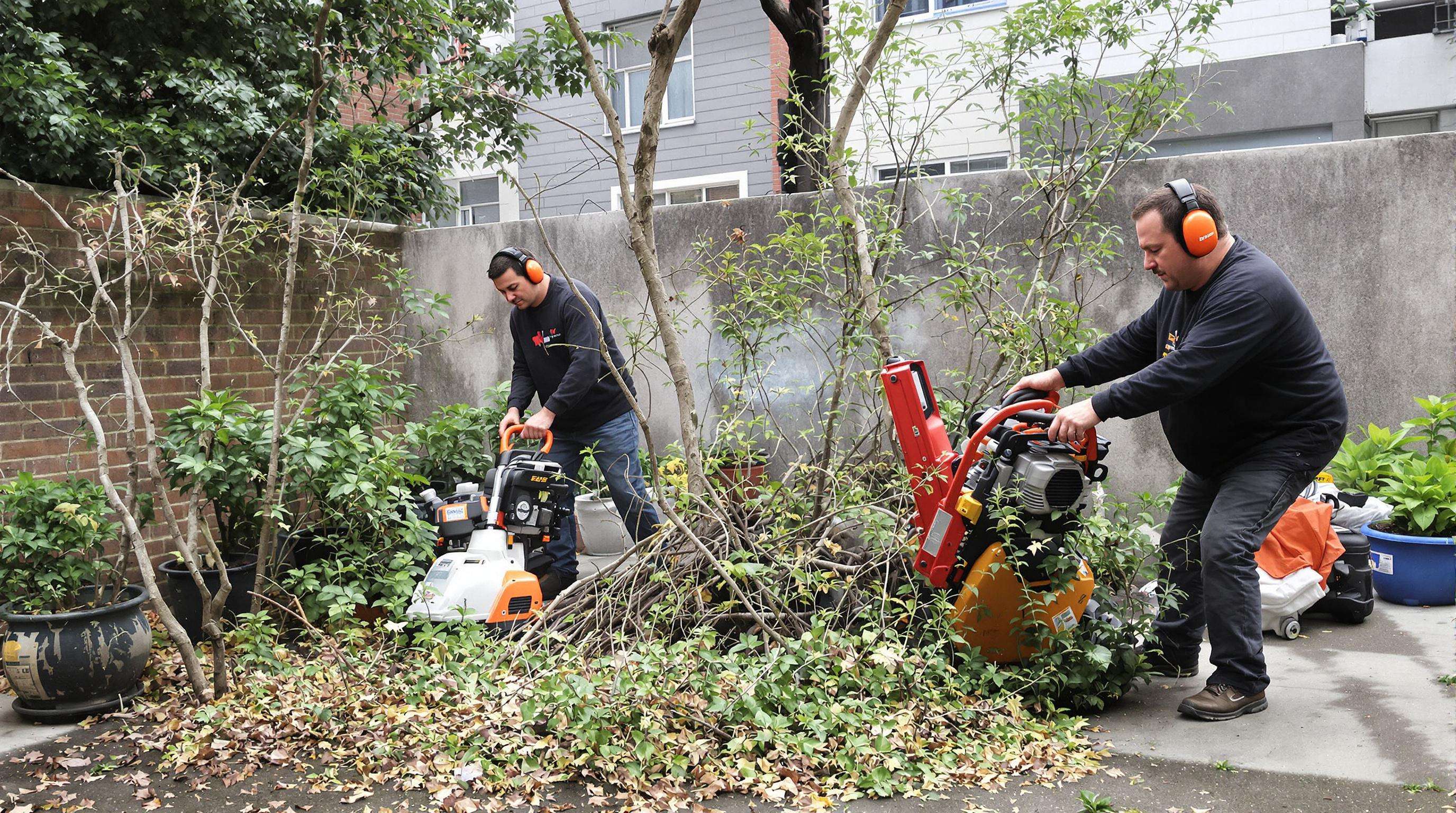Power Source Fundamentals for Branch Shredders
Electric Branch Shredder Mechanics Explained
Motorized branch shredders have this recalling potential 14-15 amp motor spinning hardened-steel blades by way of centrifugal force, ideal for chipping small diameter, softwood branches (up to 1.5-1.75 inches thick). Their direct-drive system removes belts and pulleys, keeping maintenance to a minimum—the blades just need periodic sharpening and lubrication. With a direct drive engine there is no capturing and releasing of flywheel energy to create shockwaves, as seen with gas shredders, this means that you are able to keep applying slow, steady force to the motor, without risk of burning it up when feeding lots of long leaves. These produce 85 decibels of noise —the same as regular kitchen blenders — and exhibit 92% efficiency after 500 operational hours with recommended residential workloads.
Gas-Powered Engine Dynamics in Branch Shredders
Heavy-duty, gasoline-powered chippers use 200–300cc engines (3–5 horsepower) to handle the toughest branch plants up to 3 inches in diameter! Their 3-stage cutting process features hammer mills for leaves, chipping blades for branches, and turbine impellers for throwing debris. While particle emissions from these models can be 30% lower than from pre-2020 engines, they still generate 95–105 decibels and must be regularly maintained with air filter replacement and spark plugs every 100 hours of use. Gas shredders can handle branches of over 2 inches in diameter 15% faster than electric models.
Chipping Capacity Analysis by Branch Diameter

Electric Models: Maximum Diameter Limitations
Electric shredders process branches up to 1.5–1.75 inches (3.8–4.4 cm) in diameter, aligning with 72% of residential purchases due to their suitability for common pruning waste. Users should prioritize straight, knot-free branches to prevent jams and premature blade wear in these torque-limited systems.
Gas Shredders: Handling Thick Branches
Gas-powered models handle branches up to 3–4 inches (7.6–10 cm), with 250cc+ engines efficiently processing damp oak and maple. Commercial-grade units extend this capacity to 6 inches (15 cm) but require 50% more annual maintenance.
Moisture Impact on Chipping Efficiency
Fresh-cut pine at 45% moisture requires 18% more torque than kiln-dried samples. Gas shredders maintain 89% efficiency with wet branches versus electric models' 62%, while dry hardwood increases blade wear by 33% across all types.
Real-World Capacity Comparison Chart
| Power Source | Typical Diameter Range | Optimal Use Case |
|---|---|---|
| Electric (Corded) | 1.5–1.75" (3.8–4.4 cm) | Daily residential pruning |
| Gas (Consumer) | 2–3" (5–7.6 cm) | Seasonal storm debris cleanup |
| Gas (Commercial) | 4–6" (10–15 cm) | Landscaping/municipal operations |
Noise, Emissions and Environmental Considerations

Decibel Levels: Electric vs Gas Branch Shredders
Electric models operate at 65-75 dB (moderate rainfall levels), while gas shredders reach 85-95 dB – equivalent to motorcycle engines. Recent construction noise studies link prolonged gas shredder exposure to an 18% increased hypertension risk in operators.
Emission Differences and Climate Impact
Gas shredders emit 2.1 kg of CO2 per hour, totaling 210 kg annually (equal to a car's 700-mile emissions). Urban electric equipment adoption could reduce particulate pollution by 34% in high-density areas.
The Urban Use Paradox
32 cities since 2022 ban gas-powered equipment under 25 HP, creating challenges for 58% of contractors needing uninterrupted operation that battery models currently can't match.
Portability and Operational Mobility
Weight and Maneuverability Trade-offs
Electric shredders (20-40 lbs) suit residential transport, while gas models (80-120+ lbs) require wheel kits but offer better stability.
Battery Life vs Fuel Range Constraints
Cordless electric shredders run for 30-120 minutes per charge, while gas models operate continuously with 5-8 minute refueling stops every 2-4 hours.
Key Mobility Metrics
| Factor | Electric | Gas |
|---|---|---|
| Avg. Weight | 28 lbs | 94 lbs |
| Refuel/Recharge Time | 90–180 min | 5–8 min |
| Effective Range | ¼–½ acre | 2–3 acres |
Cost Analysis: Purchase and Maintenance Requirements
Initial Investment Comparison
Electric models cost $300–$1,200 versus gas models at $800–$3,500, with commercial gas units commanding a 40–60% premium.
Long-Term Maintenance Costs
Annual costs range $15–$50 for electric vs $120–$300 for gas models, with gas engines losing 12–18% efficiency after 500 hours without service.
| Cost Factor | Electric | Gas |
|---|---|---|
| Hourly Operational Cost | $0.20–$0.35 | $1.10–$1.80 |
| Annual Fuel Expenses | $15–$30 | $250–$500 |
Battery replacements add $200–$500 every 3–5 years to electric models, while fuel dominates 68–72% of long-term gas costs.
Application-Based Selection Guide
Residential Use Case Scenarios
Electric shredders dominate for suburban yards with their sub-70 dB operation and 2" diameter capacity, though battery models require runtime planning (30-45 minutes per charge).
Commercial Landscaping Requirements
Gas shredders handle 3-4" branches essential for tree services, with commercial-grade engines lasting 6-8 hours daily before requiring blade sharpening at 300-400 service hours.
FAQ Section
What is the noise level of electric branch shredders?
Electric branch shredders operate at 65-75 decibels, similar to moderate rainfall levels.
What is the maximum branch diameter electric shredders can handle?
Electric shredders can process branches up to 1.5-1.75 inches (3.8-4.4 cm) in diameter.
How often do gas shredders require maintenance?
Gas shredders typically need air filter replacement and spark plug maintenance every 100 hours of use.
What are the cost differences between electric and gas branch shredders?
Electric models range from $300–$1,200, whereas gas models range from $800–$3,500, with higher long-term fuel costs.
Why might contractors prefer gas shredders in urban areas?
Contractors may prefer gas shredders due to their uninterrupted operation capabilities and ability to handle larger branches effectively.
Table of Contents
- Power Source Fundamentals for Branch Shredders
- Chipping Capacity Analysis by Branch Diameter
- Noise, Emissions and Environmental Considerations
- Portability and Operational Mobility
- Cost Analysis: Purchase and Maintenance Requirements
- Application-Based Selection Guide
-
FAQ Section
- What is the noise level of electric branch shredders?
- What is the maximum branch diameter electric shredders can handle?
- How often do gas shredders require maintenance?
- What are the cost differences between electric and gas branch shredders?
- Why might contractors prefer gas shredders in urban areas?

